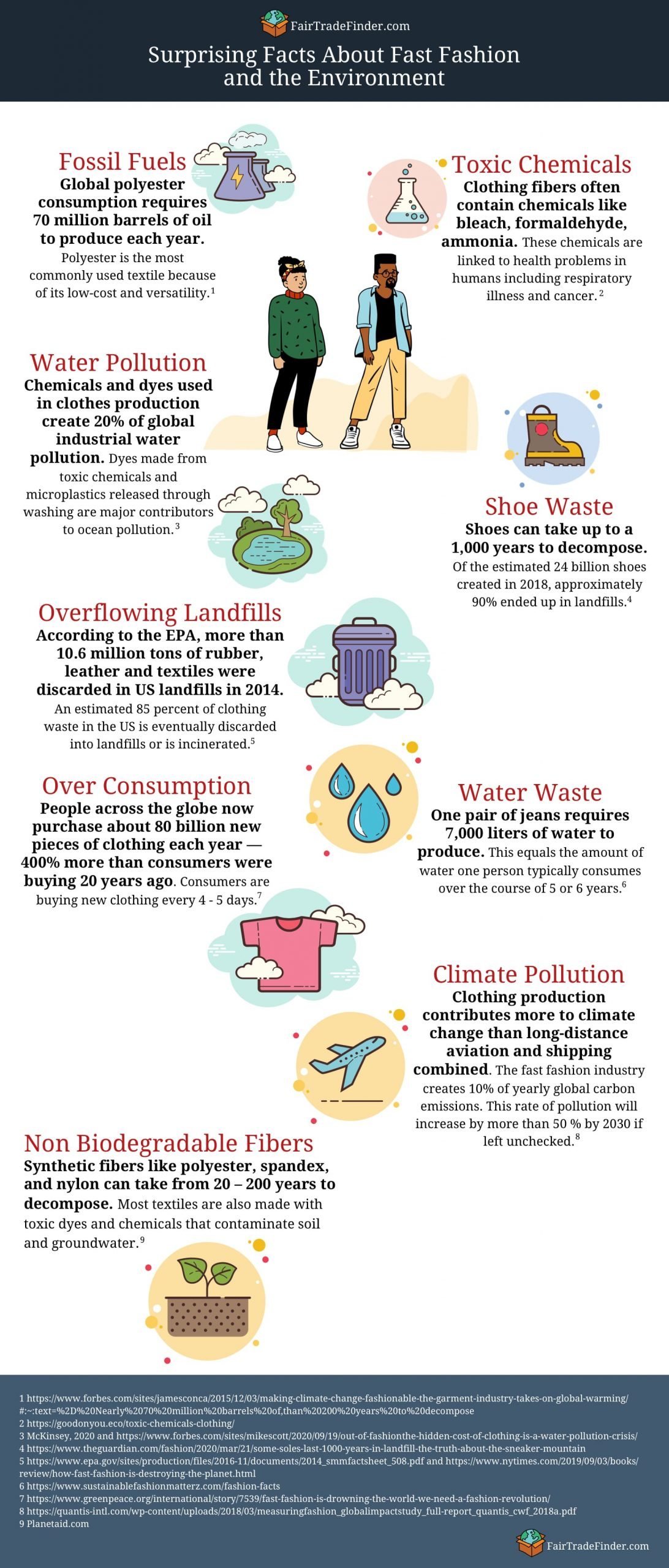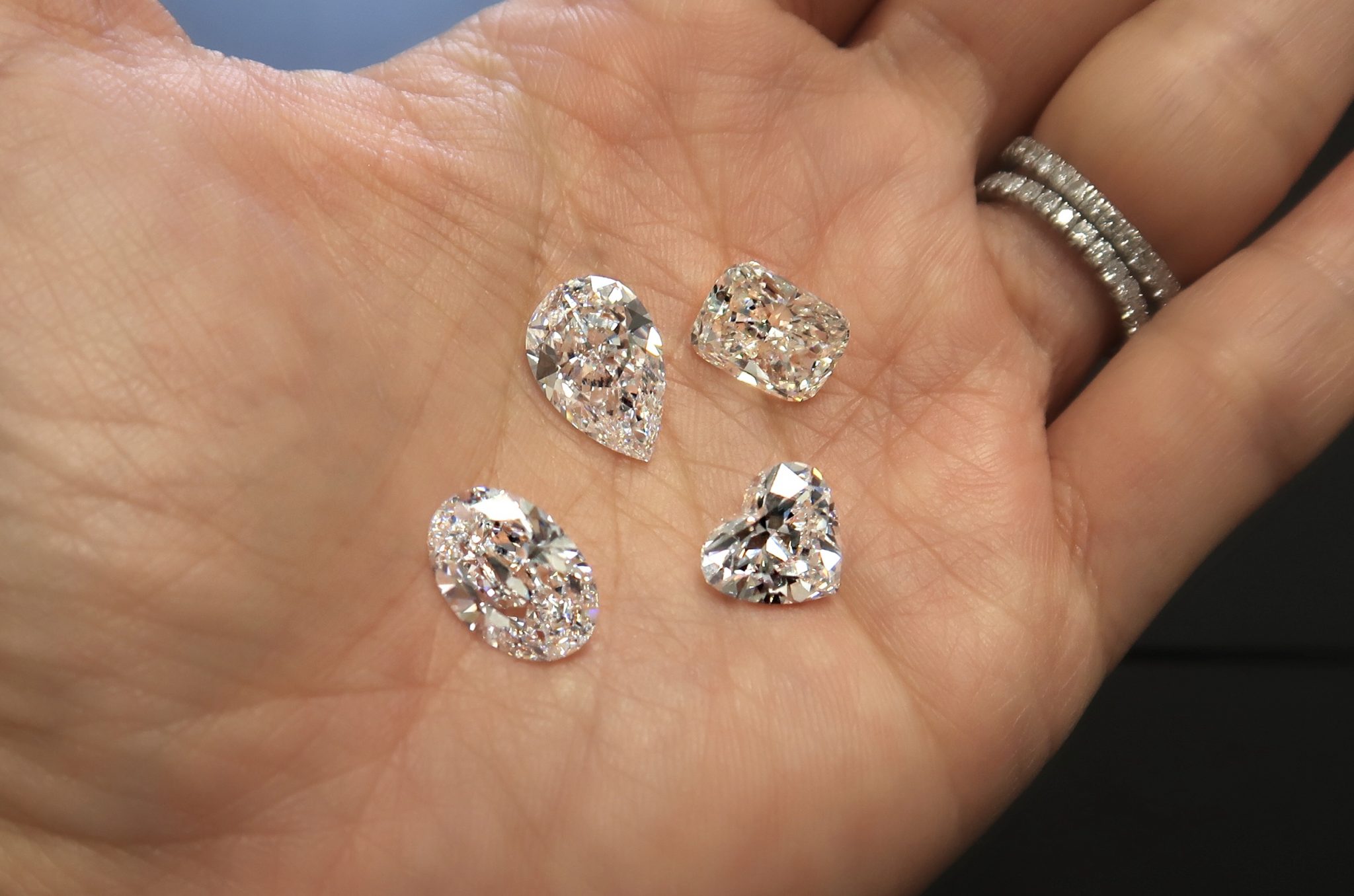Consumers shopping for inexpensive, trendy fashion rarely consider the effects their purchases have on the natural environment. Fast fashion is designed to be cheap and disposable. After a season ends, shoppers are encouraged to dispose of the “old” and quickly replace their wardrobe with the hot new trends.
As a result, people are consuming and discarding clothing and shoes at unprecedented levels. Fashion is seen as easily replaceable and somehow magically disposable. Out of closet, out of mind.
Table of Contents
Fast Fashion and the Explosion of Consumption
The fashion industry is the second largest contributor to climate change, right behind the oil industry. As consumers purchase significantly larger quantities of clothing on an annual basis compared to 50 years ago, textiles are produced to be cheaply acquired and quickly disposed of.
“Fast fashion” according to Wikipedia, is a process by which big brands create cheap versions of expensive “haute couture” designed by exclusive fashion houses. Consumers feel like they are wearing the latest styles from Paris and Milan, while paying bargain basement prices and quickly disposing of items after the fad fades. This process creates ever-growing quantities of trash, pollution and the overconsumption of resources.
Consumers now purchase about 400% more clothing than 20 years ago, or approximately 80 billion new pieces of clothing each year. To put these numbers in perspective, shoppers are buying new clothes and shoes every 4 – 5 days.
How is Fast Fashion Changing the Environment?
Oil Consumption
Upwards of 70 million barrels of oil are consumed each year to create textiles like polyester and nylon. 1 The textile industry produces 1.7-billion tons of fossil fuel CO2 per year, and is on track to increase over the coming decades.
Water Waste
In terms of water consumption, fashion far outpaces hydraulic fracturing. For example, a single pair of jeans requires 7,000 liters of water to produce. 2 This level of consumption is projected to increase significantly over the next 20 years. In spite of this, water waster in the fashion industry gets very little publicity from environmental groups, as compared to fracking.
Overflowing Landfills
According to the EPA, more than 10.6 million tons of rubber, leather and textiles were discarded in US landfills in 2014. Consumers regularly purchase cheap clothing that is worn a handful of times, and the majority of these items end up in the garbage. In the US, 85% of all discarded clothing ends up in landfills.
On the other end of the supply chain are the fashion retailers, who end up with millions of tons of unsold clothes that also end up as trash. The fashion powerhouse H&M has even started incinerating excess clothing in the place of coal to power its warehouses.
Non-Biodegradable Fibers
Fossil-fuel based fabrics remain in landfills for decades after they are disposed of, with 85% of synthetic, non-biodegradable synthetic fabrics ending up in landfills. Fabrics like spandex and polyester can take upwards of 200 years to decompose. 4 A pair of sneakers can remain in the environment for 1,000 years. 5
Climate Pollution
The fashion industry is a bigger driver of climate change than air travel and shipping combined, producing approximately 8% of global carbon emissions. 6 655 million tons of fossil fuel CO2 pollution were released into the environment in 2014, and 40% of this output came from fashion production.

While cotton is a more sustainable alternative to polyester because it easily biodegrades into the earth, the crops require fertilizers which emit powerful greenhouse gases that are more powerful than CO2.
Toxic Chemicals
In addition, toxic chemicals like bleach, formaldehyde and ammonia are commonly used to treat textiles. These chemicals are linked to respiratory illness and cancer in humans. 7 There are viable alternatives to using chemically treated fabrics, such as organic cotton, hemp and bamboo.
Conclusion
In response to the challenges presented by fast fashion, innovative solutions are in development, in the form of sustainable clothing brands, organic textiles and vegan sneakers, among other ideas. These new approaches prioritize higher quality, non-toxic materials, ethical labor standards and environmentally conscious manufacturing.
The good news is that large brands are starting to build sustainable practices into their business model. Brands like Adidas have created an extensive line of vegan sneakers and are partnering with environmental groups to transform plastic bottles from the ocean into running shoes. Everlane has also developed an extensive line of outwear constructed from recycled PET plastic.
At the core of the problem we currently face is the need for people to simply consume far less, incorporate sustainable practices into their daily lives, and to recycle unwanted items rather than simply throw them away. We need to revise our relationship with consumerism and realize that in terms of planet earth, less is truly more.
Author:
Kristina Meyers is a contributor to Fair Trade Finder, a blog that provides online shopping recommendations for sustainable, ethical and organic products and services.
Kristina is an experienced consultant with a demonstrated history of working in consumer goods, government agencies and software as a service. She is skilled in analytical skills, web design, management, and marketing. Kristina has a Bachelor of Science in Design and Urban Planning from Cornell University, Ithaca New York.
Social Media:
- LinkedIn: www.linkedin.com/in/kristina-meyers-55734435
- Facebook: https://www.facebook.com/Fair-Trade-Finder-105184671490987
- Instagram: https://www.instagram.com/fair_trade_finder/
- Twitter: https://twitter.com/FairTradeFinder
Infographic Provided by UCA Lingerie














